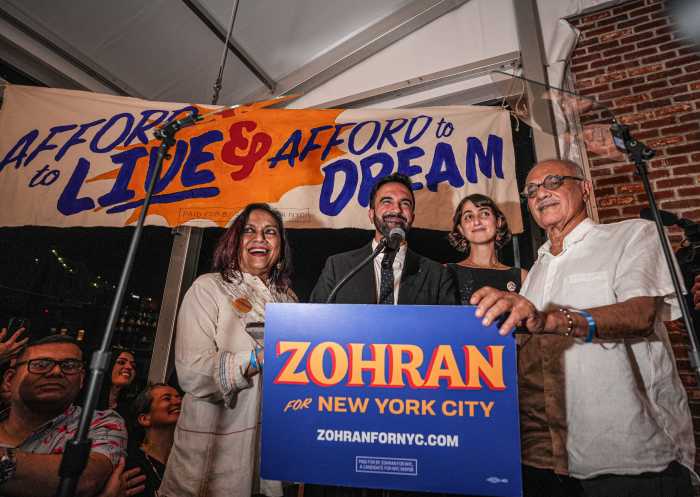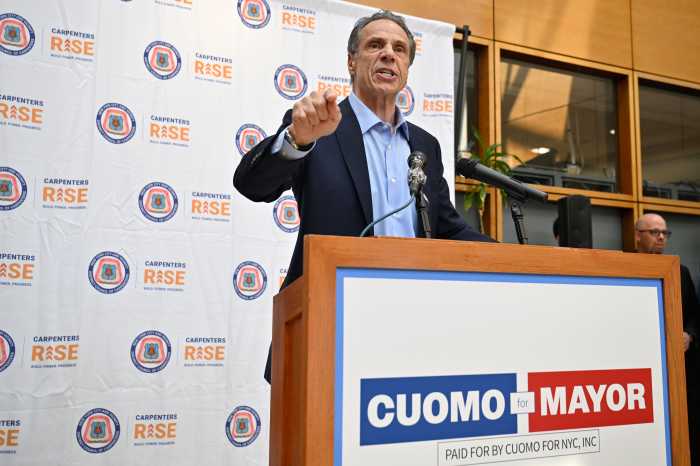
New Yorkers deserve a modern transit system on par with the best around the world. They deserve to travel safely and smoothly. And they deserve cleaner air and better health.
It’s rare that a big idea comes along that can address all of that at once.
But a plan to reduce traffic in Manhattan by charging a toll to enter the central business district south of 61st Street would do that. It could have a broad impact on quality of life by reducing traffic on busy Manhattan streets, getting more trucks and cars off the roads, lowering carbon emissions, making the area safer for pedestrians, and even lowering asthma rates.
And it could provide an urgently needed infusion of cash for the MTA. Add in other funding, like taxes from internet sales and legalized marijuana, and there’s the potential to generate $22 billion for transit capital projects and large-scale repairs outlined in the next five-year capital plan.
The tolling plan, known as congestion pricing, would feature higher tolls at peak times and has had great success from Singapore to Stockholm.
It is a concept applauded by economists and environmentalists, one that would be revolutionary for the region. After debating this for too many years, there are elected officials still not on board, even though they lack solid alternatives or clear reasons to object.
Gov. Andrew Cuomo hopes to get it done in the state budget, rather than in separate legislation later. He’s right to make it happen now. Mayor Bill de Blasio, too, has agreed to the plan.
Now the State Legislature must get behind the effort.
Congestion pricing, when combined with other funding sources, would be the first big step toward creating a well-funded and well-managed MTA.
What would that mean for the region?
City commuters could potentially count on a reliable, better subway ride, thanks to new signaling and cars, and other improvements. Add in enhanced stations and increased accessibility, including new elevators at key stations, and expanded bus service.
Beyond that, better public transit can spur economic growth across the entire region.
City lawmakers are mixed on congestion pricing. Some in Queens and Brooklyn are on the fence, and they need to be more forceful in their support. Others have rejected the notion altogether, thinking too many of their constituents drive to work — even if the statistics don’t bear that out.
Among the biggest questions: How will the revenue be divided?
Cuomo and de Blasio agree that congestion-pricing revenue should go into a lockbox for the MTA capital plan, with priority to subways and buses. That’s appropriate, since most of that plan goes to NYC Transit, and because city residents will be affected most. Still, suburban commuters must see some benefit. So, there should be a commitment in the budget to dedicate part of the revenue to the LIRR and Metro-North.
Some city officials, including City Council Speaker Corey Johnson, have argued that the entire pot should go to the city. They’re wrong to think so narrowly, especially when the city gets an economic boost from suburban commuters every day.
There are some other concerns that must be addressed, too. Queens commuters who drive over the RFK Bridge and pay the toll, for instance, shouldn’t have to also pay the full cordon toll at 61st Street if they drive there directly. And a proposed oversight committee that includes a city representative to watch over the subways also should have a commuter rail-specific representative. The rules governing this committee should not give any one member veto power over a project. To stop or demand a reworking of a project should require a majority.
Then there are the valid concerns of the outer boroughs, particularly areas not well-served by the subway system. The MTA and NYC both have bus service improvement plans in place already, but they must be prioritized. There’s plenty of time before December 2020, when congestion pricing would go into effect, to add bus lanes and traffic-signal prioritization, expand express and select bus service, redesign bus routes, and set up all-door boarding. The MTA also should look at ways to help riders handle the first and last mile — from homes to subway stations and back. But it’ll all take political will and focus.
Finally, it’s important to note that we still don’t know what the actual tolls would be. They would be determined by the committee at a later date. But an $11 fee to enter Manhattan’s central business district is a fair estimate — roughly what a round-trip via the Midtown Tunnel costs now.
A congestion toll won’t single-handedly meet all MTA needs, save the environment or clear every road. There’s more to do. But we have to start here.






























